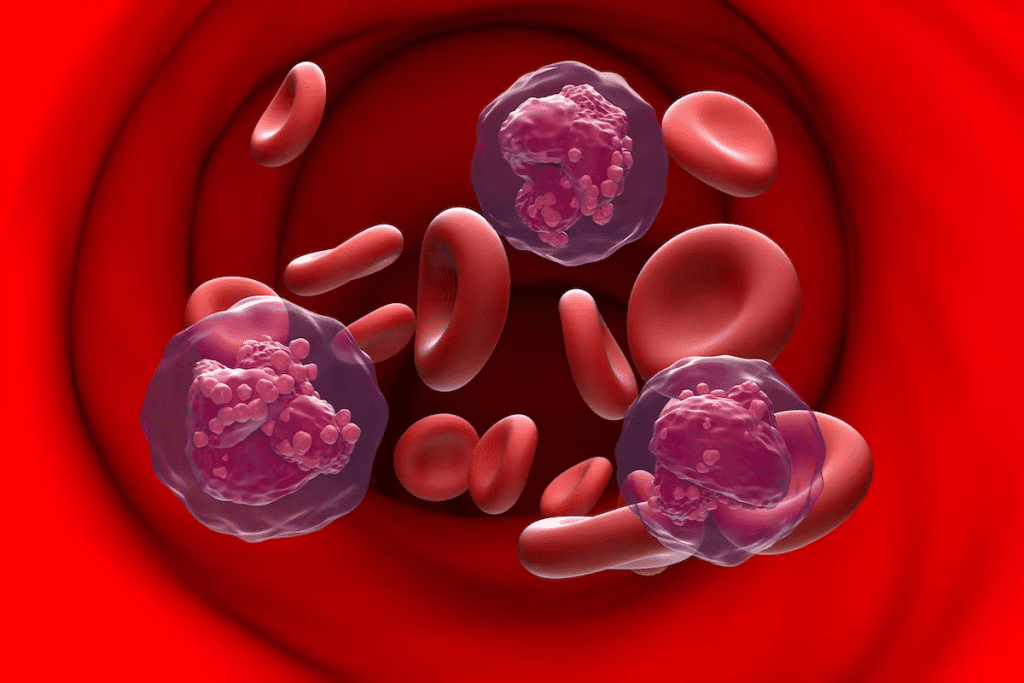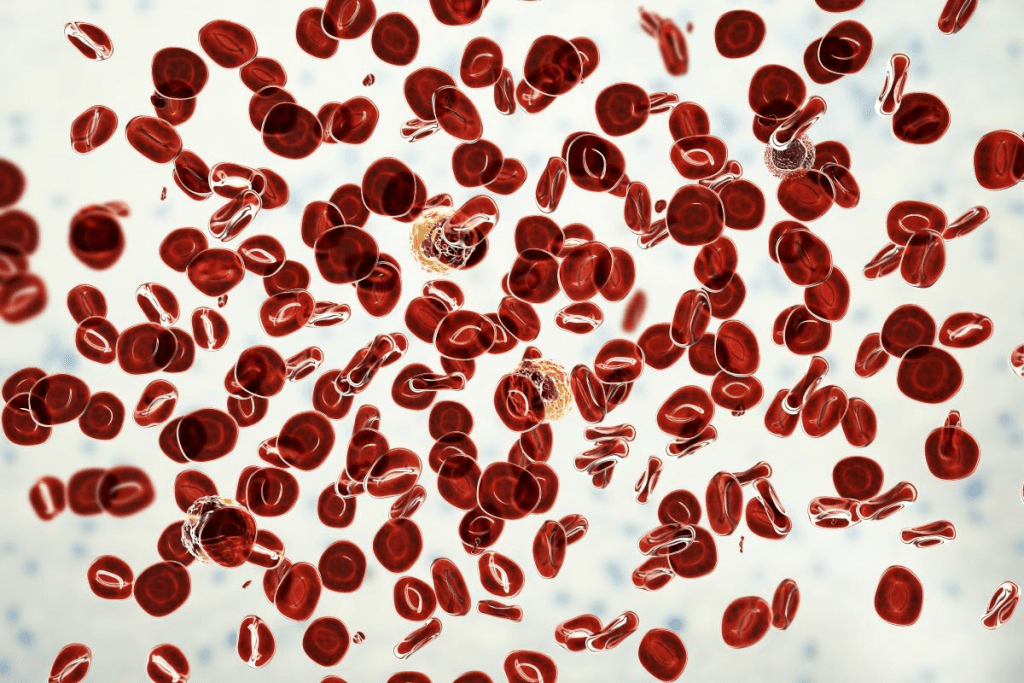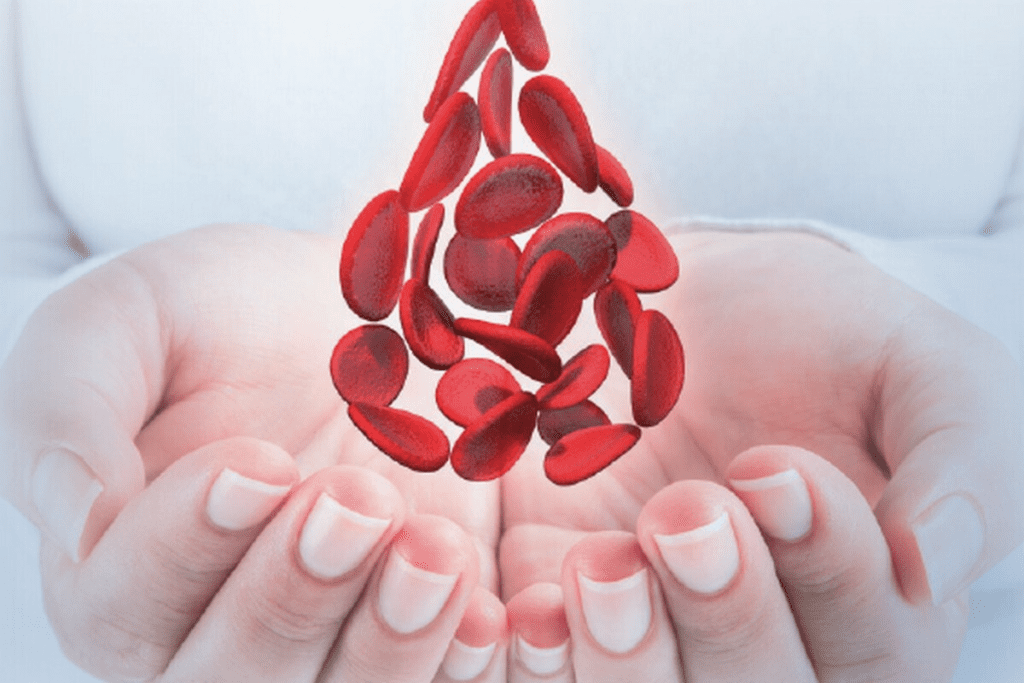Last Updated on November 13, 2025 by

Chemotherapy-induced anemia is a big problem for people with cancer. It affects their quality of life. We will talk about the main medicines used to treat this, like erythropoiesis-stimulating agents (ESAs) and iron supplements. What medication is given for chemo-induced anemia? Explore drugs for anaemia and the amazing, powerful options for relief during cancer treatment.
ESAs, such as darbepoetin alfa, help make more red blood cells. This means patients need fewer blood transfusions. Iron supplements are also key because they help make red blood cells.
The market for medicines for chemotherapy-induced anemia is growing fast. This is because more people are getting cancer and using treatments that weaken the blood. By 2025, the market was expected to be $2.77 billion. It’s predicted to hit over $5.5 billion by 2035.
Patients getting chemotherapy might get anemia because of how it affects red blood cell making. Chemotherapy-induced anemia (CIA) happens when treatment harms bone marrow cells that make red blood cells. This leads to less hemoglobin, causing fatigue, shortness of breath, and dizziness.

Chemotherapy goes after fast-growing cells, like cancer and bone marrow cells that make red blood cells. This damage cuts down red blood cell making, causing anemia. How bad anemia gets depends on the chemotherapy type and dose, and the patient’s health.
Knowing how chemotherapy affects red blood cell production is key to handling CIA. We’ll look at symptoms and how they affect patients’ lives.
The symptoms of chemotherapy-induced anemia can really hurt a patient’s life. Common symptoms include:
These symptoms can make it hard to do daily tasks, enjoy social time, and feel good overall. It’s important to manage CIA well to lessen these effects and help patients feel better. Treatments like erythropoiesis-stimulating agents and iron can help ease symptoms and improve life quality.
Drugs for Anaemia used in chemotherapy patients To fight anemia caused by chemotherapy, doctors use special medicines. These boost the making of red blood cells. Erythropoiesis-Stimulating Agents (ESAs) are a key group of drugs for anaemia.
ESAs are vital in treating anemia from chemotherapy. They help the bone marrow make more red blood cells. This raises hemoglobin levels and cuts down on blood transfusions.
ESAs mimic the action of erythropoietin, a hormone that helps make red blood cells. Studies show ESAs work well in treating anemia in cancer patients getting chemotherapy. They help reduce fatigue, weakness, and shortness of breath, improving life quality.
ESAs work by binding to receptors on red blood cell precursors in the bone marrow. This starts a chain of events that boosts red blood cell production. Darbepoetin alfa is a well-studied ESA that has shown great results, raising hemoglobin by 2.28 g/dl on average.
The benefits of ESAs include:
Understanding how ESAs work helps doctors make better choices in treating anemia from chemotherapy.

ESAs like Darbepoetin Alfa (Aranesp) and Epoetin Alfa (Procrit, Epogen) are key in fighting anemia caused by chemo. They help raise hemoglobin levels. This means fewer blood transfusions and better symptoms for patients.
Darbepoetin Alfa is a long-acting ESA. It’s good at treating anemia from chemo. It lasts longer, so patients don’t need to take it as often. Studies show it boosts hemoglobin and cuts down on blood transfusions.
Key benefits of Darbepoetin Alfa include:
Epoetin Alfa is also used to treat anemia from chemotherapy. It boosts red blood cell production. Research shows it raises hemoglobin, improves life quality, and lessens fatigue in chemo patients.
It’s worth noting that while Epoetin Alfa is effective, it requires more frequent dosing compared to Darbepoetin Alfa.
Key aspects of Epoetin Alfa include:
Darbepoetin Alfa and Epoetin Alfa both help with anemia from chemo. But, they can also cause risks like high blood pressure and blood clots. Knowing how each works helps doctors choose the best treatment for each patient.
Iron supplements are key in treating anemia caused by chemotherapy. They help ESAs work better. This is important because anemia can really affect a patient’s life.
Iron supplements help the bone marrow make more red blood cells. This is vital for ESAs to be effective.
Choosing between oral and intravenous iron depends on several things. These include the patient’s health, how they react to treatment, and if they can handle iron supplements.
We look at both options to find the best treatment for our patients.
To get the most from ESA therapy, iron levels must be right. Iron supplements boost red blood cell production, making ESAs more effective.
Research shows better results when iron and ESA therapy are used together. Patients see higher hemoglobin levels and need fewer blood transfusions.
By using ESA therapy with iron supplements, we offer complete care for CIA patients. This improves their quality of life.
Severe anemia from chemotherapy often needs quick action, like blood transfusions. Patients with fatigue, shortness of breath, and other serious symptoms find relief. Transfusions boost red blood cells and help tissues get more oxygen.
Doctors consider transfusions for severe anemia, with hemoglobin levels often under 8 g/dL. The choice depends on symptoms, health, and transfusion risks.
Guidelines suggest transfusions for those with chemotherapy anemia and severe symptoms or urgent needs (PMC7388847).
Transfusions quickly fix anemia, improve oxygen to tissues, and ease symptoms like fatigue. But, they also have risks like reactions, iron overload, and infections.
Healthcare teams must balance benefits and risks for each patient. They look at other treatments like erythropoiesis-stimulating agents (ESAs) and iron to manage anemia well.
Knowing when and how to use blood transfusions helps us care for patients with severe anemia. This improves their quality of life and treatment results.
Managing chemotherapy-induced anemia is a careful balance. Erythropoiesis-stimulating agents (ESAs) help, but they come with big risks. These include heart problems and blood clots.
ESAs can lead to heart issues like high blood pressure and blood clots. This is a big worry for people with heart problems. We must think hard about the benefits and risks of ESA therapy, mainly for those with heart issues.
Blood clots, like deep vein thrombosis and pulmonary embolism, are also a big concern. It’s important to watch patients closely for these signs. We need to check their symptoms and medical history to spot those at higher risk.
Regular checks are key to reducing ESA therapy risks. We need to watch hemoglobin levels to avoid too high increase. Also, keeping an eye on blood pressure is essential, as high blood pressure is a common side effect.
We suggest a detailed monitoring plan that includes:
By watching patients closely and adjusting treatment as needed, we can lower ESA therapy risks. This way, we can safely manage chemotherapy-induced anemia.
Hospitals are key in managing anemia caused by chemotherapy. They use a detailed care plan. This plan is based on the latest research and guidelines.
The heart of this care is the multidisciplinary care team. It includes hematologists, oncologists, nurses, and more. Together, they create treatment plans that fit each patient’s needs.
Multidisciplinary teams are vital for treating anemia caused by chemotherapy. They look at all parts of a patient’s health. This includes physical, emotional, and psychological impacts.
Working together, these teams can greatly improve patient results. A leading expert says, “A team-based approach is key in managing chemotherapy-induced anemia. It ensures patients get the best care.”
“Having different healthcare professionals work together is essential for top-notch, patient-focused care.”
Evidence-based treatment paths are important for managing anemia caused by chemotherapy. These paths are made from the latest research and guidelines. They help ensure patients get the most effective treatments.
Some key parts of these paths include:
By following these paths, hospitals can make sure their treatments are up to date.
We think that combining multidisciplinary teams with evidence-based paths is the best way. Hospitals can then offer the best care for patients with chemotherapy-induced anemia. This improves their quality of life and treatment results.
Managing chemotherapy-induced anemia (CIA) is key to better patient outcomes. Our knowledge of CIA has grown, and so have the treatment options.
Today, treatments like darbepoetin alfa (Aranesp) and epoetin alfa (Procrit, Epogen) help with low hemoglobin. But, we’re looking at new ESAs and therapies. These could make treatments safer and more effective, leading to better hemoglobin levels and cures for anaemia.
As research continues, we’ll see more targeted treatments. This will improve the lives of patients with cancer. By exploring new paths, we’re getting closer to better managing CIA and caring for our patients.
Chemotherapy-induced anemia happens when chemo harms the bone marrow cells that make red blood cells. This leads to low hemoglobin levels. Symptoms include fatigue, shortness of breath, and dizziness.
The main treatments are erythropoiesis-stimulating agents (ESAs) and iron supplements. ESAs help make more red blood cells. Iron supplements ensure the bone marrow has enough iron for red blood cell production.
ESAs boost red blood cell production in the bone marrow. This increases hemoglobin levels and reduces the need for blood transfusions.
Darbepoetin alfa and epoetin alfa are the top ESAs for treating anemia. They’ve shown great results in clinical trials, raising hemoglobin levels and easing symptoms.
Iron supplements are used with ESAs to enhance their effect. They ensure the bone marrow has enough iron for red blood cell production, making ESA therapy more effective.
Blood transfusions are for severe anemia. They quickly raise hemoglobin levels, easing symptoms like fatigue and shortness of breath.
ESAs can cause serious health issues, like heart problems and blood clots. It’s vital to closely monitor patients during ESA therapy to reduce these risks.
Hospitals use teams of experts to care for anemia patients. These teams follow evidence-based treatment plans to improve patient outcomes.
Treatment for anemia is getting better, thanks to ongoing research. New ESAs and treatments are being developed to improve patient care and safety.
Yes, chemo can increase blood clot risk. ESA therapy also carries this risk. Close monitoring is key to preventing these serious issues.
ESAs, like darbepoetin alfa and epoetin alfa, are used to treat low hemoglobin. They stimulate red blood cell production.
Subscribe to our e-newsletter to stay informed about the latest innovations in the world of health and exclusive offers!